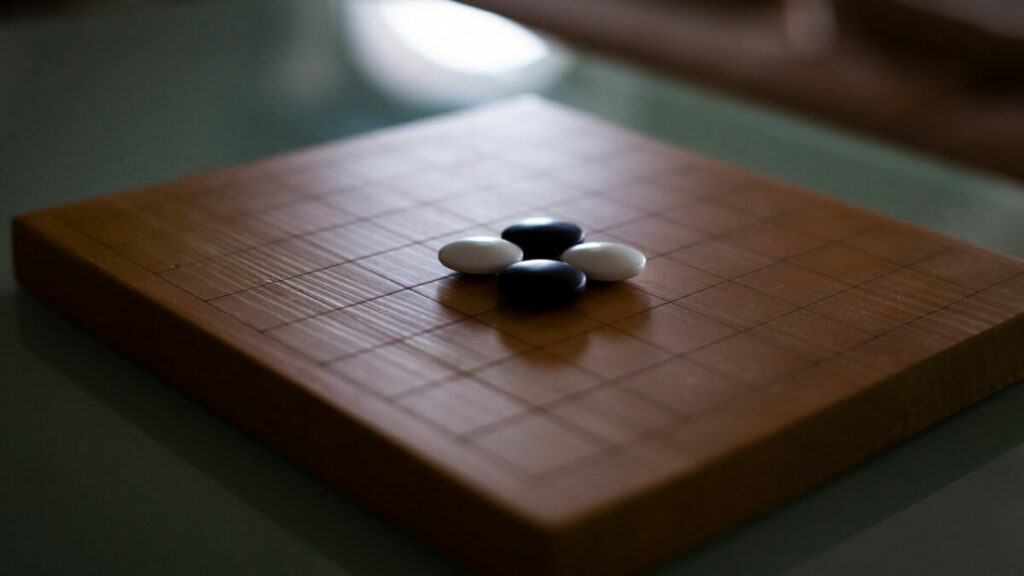Today, I’m diving into a world where strategy meets tradition, where ancient wisdom converges with modern gameplay. Welcome to Go, quite possibly the oldest board game ever played. Strap in as we explore this captivating game that has captured the hearts and minds of players for over two millennia.
What is Go, Anyway?
Go, often called Baduk in Korea and Weiqi in China, is like a time capsule of strategy and wits. With roots tracing back 2,500 years to ancient China, it’s a game of pure skill that challenges players in ways you wouldn’t believe. Imagine chess, but with a twist. The rules are unique, and it’s all about territory, intuition, and brilliant analytical skills.
The Go board is like a battlefield, a grid of 19×19 lines, where players plant their stakes, making moves that could tip the balance in their favour. But don’t worry if you’re starting; Go for beginners often begins on smaller boards like 9×9 or 13×13 grids. And for the travelling enthusiast, there’s even a portable version called “Flip It.”
The board was a 17×17 grid in ancient times, but the 19×19 became the official standard when it made its way to Korea and Japan. The game pieces, known as “stones,” come in two flavours: black and white. It’s a classic showdown of contrasting forces.
Mastering the Moves
Now, let’s get into the nitty-gritty of Go. The game starts with an empty board, and the black stones take the opening move, occupying intersections where the lines meet. Once a stone finds its place, it stays put unless captured.
Capturing happens when the enemy surrounds an opponent’s stone from all sides. It’s a bit like a siege in a medieval fortress. At the end of the game, players tally up the vacant intersections in their territory and add them to the number of captured stones. The player with the most significant total reigns supreme.
The Beauty of Learning Go
So, why would you want to immerse yourself in Go? Well, for starters, it’s an absolute blast. The game draws out your unique personality, all while testing your strategic mettle. It’s a delicate dance of offence and defence; in these moments of strategy, you truly learn about your strengths and weaknesses. Unlike chess, Go is all about creativity. There’s no need for memorization or analyzing your position to exhaustion. It’s a game that rewards the free spirit in you.
A Game of Strategy
Now, let’s talk strategy. To conquer the Go board, you must first stake your claim. At the game’s outset, consider placing your stones near the “handicap markers” in the corners of the board. This strategic move can give you an edge, helping you secure corner positions that are easier to defend and vital for expanding your territory.
Remember, the edge of the board is your friend. Stones placed there are easier to capture. Corners require just two stones to secure, while sides need three. On the other hand, open areas are a bit more challenging and require more effort.
When you’re looking to establish control over an open area, aim to build a stable structure. This protects your stones and provides a solid base for future moves.
Here’s a pro tip: keep your stones far from your opponent’s. You don’t want to inadvertently give them an advantage in influence while you’re busy chasing their stones. And avoid placing your stones in your opponent’s territory; that’s just serving up free stones for them to capture. Reserve that move for when you’re confident about seizing their stones.
Cracking the Go Code: Rules and Strategies
Understanding the rules is your first step toward Go glory:
- The game begins with an empty board unless players agree to handicap.
- Black first moves towards the upper right corner, and white follows suit towards the lower right corner.
- Players take turns placing stones on vacant intersections.
- Passing your turn is allowed.
- The game ends after two successive passes.
- Victory is determined by the player who occupies the most extensive territory.
But mastering Go isn’t just about rules; it’s about strategy, too. Here are a few strategies to keep in your Go toolkit:
1. Keep the Stones Connected: Forming large groups of connected stones is key to quickly occupying territory. You can use two adjacent stones at the centre of the board to create a group of six, capturing your opponent’s stones. These connected stones also make it easier to share liberties.
2. Gain Territory: Experts say this is even more critical than capturing your opponent’s stones. You can gain territory by constructing walls around empty intersections on the board.
3. Protect Your Stones: Always look for ways to protect your stones. Don’t hesitate to pass if you find yourself in a tight spot with no advantageous moves. But remember, the more stones you play, the more points you’re handing over to your opponent.
And here’s a pro move: if you realize your opponent is stronger than you and they offer you a handicap, take it. It’s a smart strategy that levels the playing field.
So, there you have it – a glimpse into the fascinating world of Go. Whether you’re a beginner or a seasoned player, this ancient game offers endless excitement and a chance to hone your strategic skills. Go ahead, place those stones, seize that territory, and embrace the captivating world of Go. It’s time to make your mark on the Go board!
